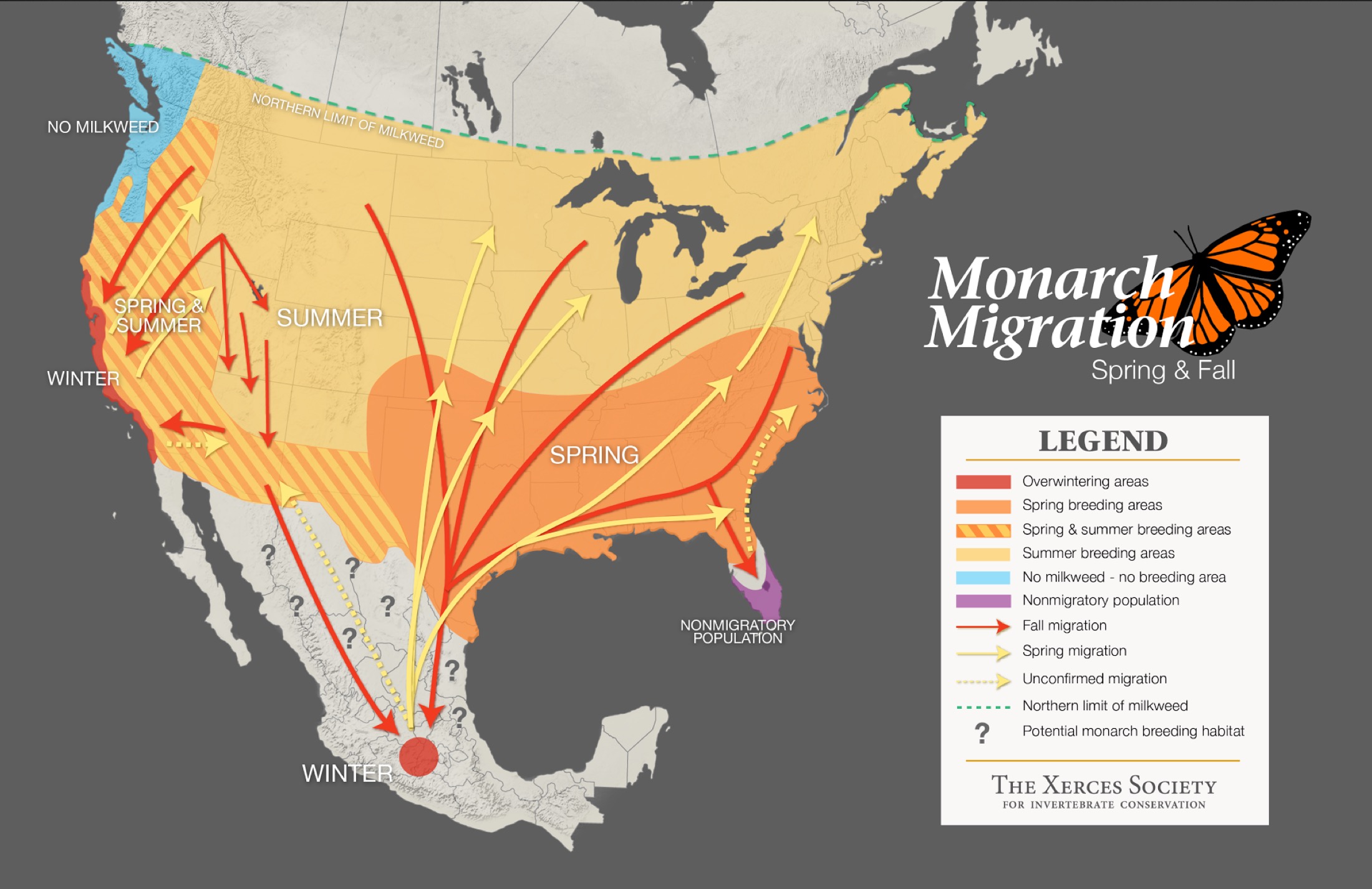Beautiful and fragile, monarch butterflies weigh only a few grams and live a matter of weeks. Monarchs are known to make long, annual migrations of nearly 2,000 miles between the Great Lakes region and Mexico to escape cold winters.
The journey involves millions of the delicate insects and requires producing several generations along the way. Recently, researchers from the University of Guelph and Environment Canada have discovered a fascinating twist that proves some monarchs deviate from the traditional path, cross the Appalachian Mountains, and produce a new, east coast generation.
The groundbreaking study solves the puzzle of why monarchs appear later on the east coast than the interior U.S.
You can watch the eastern monarch migration in this short video from Google Earth Tour. The video also features people that help them out along the way, including some from the University of Kansas' Monarch Watch program. https://www.youtube.com/watch?v=uqDwvuleRYc
Monarch numbers are declining. Some reasons are temporary, such as weather. According to a monitoring report carried out by WWF and Conanp, monarch numbers in Mexico were down by about 15% in 2017-18 due to two tropical storms and three hurricanes on two occasions in the Atlantic coasts in mid-September of 2017, when the migration begins.
Other reasons for the monarch decline are more permanent, and ominous including development and agricultural practices. The longterm survival of monarchs is connected to their specific diet of milkweed and the dramatic loss of the native plant. According to the Center for Biological Diversity, there has been a 99% reduction in milkweed in Midwest croplands since 1999. Development is consuming 6,000 acres per day, a loss of 2.2 million acres annually. Other studies cite the overuse of herbicides and increased use of genetically modified crops, especially seeds containing glyphosate, as major factors in habitat loss.
You can help monarchs and other pollinators by reducing herbicide use, planting shrubs and trees that provide shelter during migration and including native milkweeds in your yard and habitat patches on your farm.
Interested in working together to restore native habitat? Let's start a conversation! Email Judy Allmon @ BluestemServices@gmail.com, or give me a call or text at 573.230.1196.




